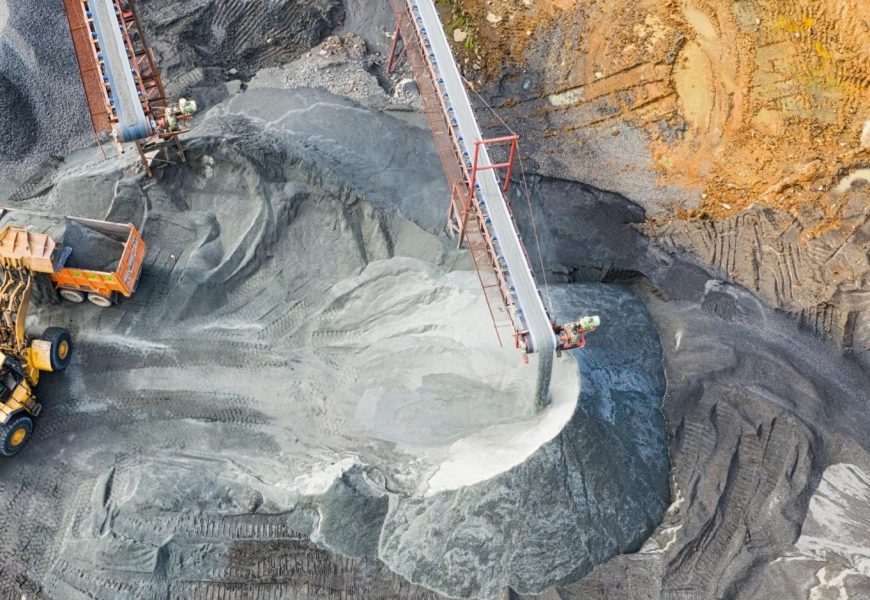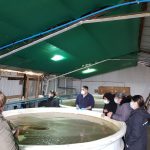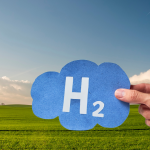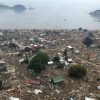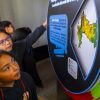If Chile were a human body, its heart would be its people; its spine, the Andes Mountains; its lungs, the Valdivian forests; its veins, its rivers; and, its blood, its copper. This is a country that’s rich in mineral resources: coal, saltpeter, gold, lithium, etc. However, their process requires including technological innovations that provide sustainability to the resources, and especially, ones that reduce environmental and social impact.
By Comunicaciones CRHIAM & FI / mariabbascur@udec.cl and cvegaa@udec.cl / Photographs: CRHIAM
The Department of Metallurgic Engineering (DIMET), and the Center of Water Resources for Agriculture and Mining (CRHIAM), have focused their work on improving mining-related processes, something which has often been called “The Salary of Chile”. Here is precisely
where its importance lies.
Water
Since its opening in 2014, the Center of Water Resources for Agriculture and Mining (CRHIAM), has focused part of its work on seeking solutions that optimize water use in mining. Although it is estimated this activity only consumes 4% of the domestic water demand, Chile is currently experiencing one of the harshest droughts in its history, so it is essential to improve watershed management, looking at reusing water, desalinization projects, and research.
In Chile, there are around 800 tailing dumps. As such, their management is a great challenge for this production sector.
“At CRHIAM, we are making progress in tailings treatment to make it more hydrophobic, recovering more water. We are also moving forward in the thickenings operation, using technology that facilitates solid-liquid separation. We have also worked on the design of air fluidization processes that allow classifying ore particles by size without using water”,
explains the Deputy Director and Lead Researcher of CRHIAM, Pedro Toledo Ph.D.
“Mining has to consider what happens at a watershed level. Hence, for it to be sustainable, there has to be a certain degree of social license for mining projects, so they can take place while
considering their surroundings”, or so states CRHIAM Lead Researcher, Leopoldo Gutiérrez Ph.D.
In this context, CRHIAM expects to contribute from a water security point of view, with a standard that looks to guarantee access to water, in terms of quantity and quality, for human consumption and productive activities. “The mining industry must measure the water it uses to control extraction. This information must be shared with the statutory authority. The formation of user
organizations must be fostered, as must participation in resource management with other sectors. Access to water is key for mining, but it also seeks to be accepted as a proactive actor for those they share the watershed with”, Pedro Toledo Ph.D. adds.
Complex minerals
A complex mineral is one with a low grade – like copper – with higher concentrations of complex minerals such as phyllosilicates and clay minerals, pyrite, and secondary sulfides. These minerals, in general, have high variability, use a large amount of water, and hence, have complicated processing.
An improvement is proposed regarding the entire process line, starting from geo-metallurgy with the development of geo-rheological models, that allow predicting the behavior of processing plants, to use corrective actions and, therefore, improve recovery.
- Sensors have been developed that measure given physical-chemical properties of the line’s mineral pulp (Konatec). This line control effectively optimizes efficiency in processing plants and, in this way, recovers more copper and molybdenum, reducing water consumption, among
other things. - Waste-based green reagents have been created to improve recovery, i.e. the pulp’s physical-chemical properties have been changed, optimizing the processes.
- Ultra-flocculator-type equipment has also been developed for decanting, improving segmentation of the processes.
- A BCR technology has been developed, to better condition the reagents in flotation, and thus, optimize the production of copper, molybdenum, and other metals of interest.
The competitive advantage of this technological package is directly linked to an increased recovery of valuable metals and water. In addition, all the sensors and equipment that have been developed are non-invasive and thus, do not affect the normal operation of a concentrating
plant. Ultimately, this type of solution improves the operational continuity of processing plants, which has a great impact on productivity.
Optoelectronic sensors
Now, we will focus on what is happening in copper processing. The technology developed by Roberto Parra Ph.D. (DIMET) and Sergio Torres Ph.D., of the Electrical Engineering Department (DIE) – “Optoelectronic Sensors to Digitalize Copper Smelters” – measures the electromagnetic radiation of chemical reactions in the pyrometallurgical process, improving the site’s productivity and monitoring, digitalizing, and analyzing information for better decision-making.
Last year saw one of the five science-based projects win the first Company Building, Apta Builder call, and in July 2021, the company, Radiometric Sensing Solutions for Mining was formed, a spin-off of Universidad de Concepción, focusing on the sale of several groups of optoelectronic sensors, including two sensors that apply different detection concepts. The first is applied to fusion and conversion reactors, measuring the oxidization radiation of different sulfides,
such as copper, iron, nickel, lead, etc. The second considers hyperspectral flow images of the smelting phases during operation.
Zero emissions and zero waste
So, what happens with the tailings? Millions of tons of mining waste are piled as mountains. For every ton of copper, up to 1.2 tons of tailings are generated. In Chile, there are currently 60 million tons of this waste, which contains heavy metals. The Green Copper proposal, led by Professor Igor Wilkomirsky Ph.D. (DIMET), could change this devastating scenario.
This is a new way of producing copper concentrate, that is to say, replacing current
technology with one based on green hydrogen. It is an innovative proposal that would
not just avoid waste, but also lead to a cleaner process, avoiding fugitive gas emissions
that contain highly toxic sulfur dioxide.
How does Green Copper work? This is a pyrometallurgical oxidation-reduction process
with green hydrogen, that takes place in the solid/gas phase at 800-850°C in closed
reactors, without managing smelting phases like the ones with traditional fusion-conversion technology. The process allows fully using the concentrate, generating commercial
byproducts of iron, molybdenum, and silica, without generating tailings. It has virtually
zero water consumption and no carbon footprint, along with a clean energy surplus that
would allow generating carbon credits. Preliminary evaluations show that the technology is competitive in Capex and Opex compared with traditional technology.
Green Copper – also including the researchers, Roberto Parra Ph.D., Eduardo Balladares Ph.D., and Fernando Parada Ph.D. was one of the projects presented at the meeting,
Chile 2020: Green Hydrogen Summit, and at Fast Forward Mining 2021.
For more information: www.crhiam.cl
Last modified: 29 de agosto de 2025
